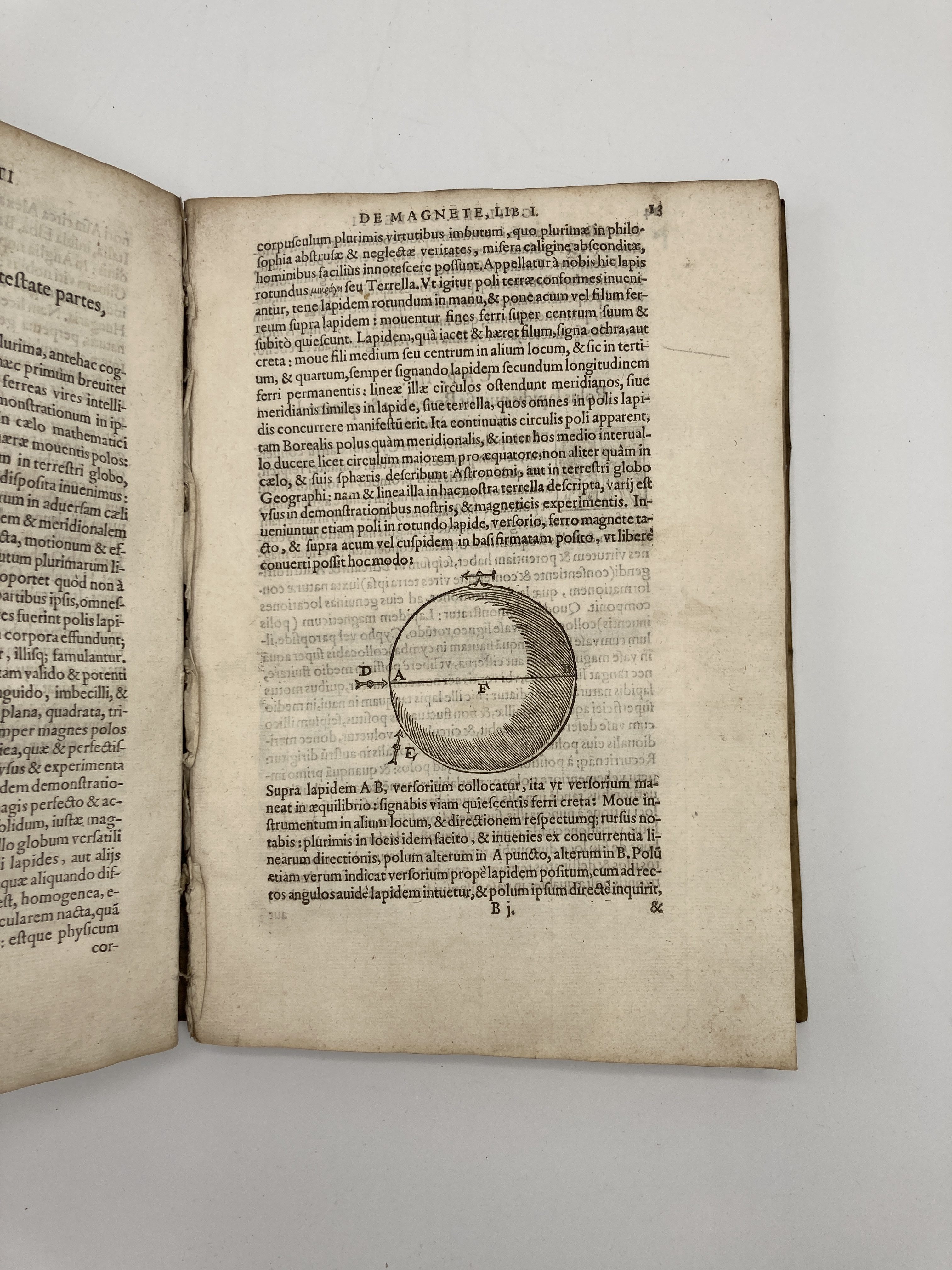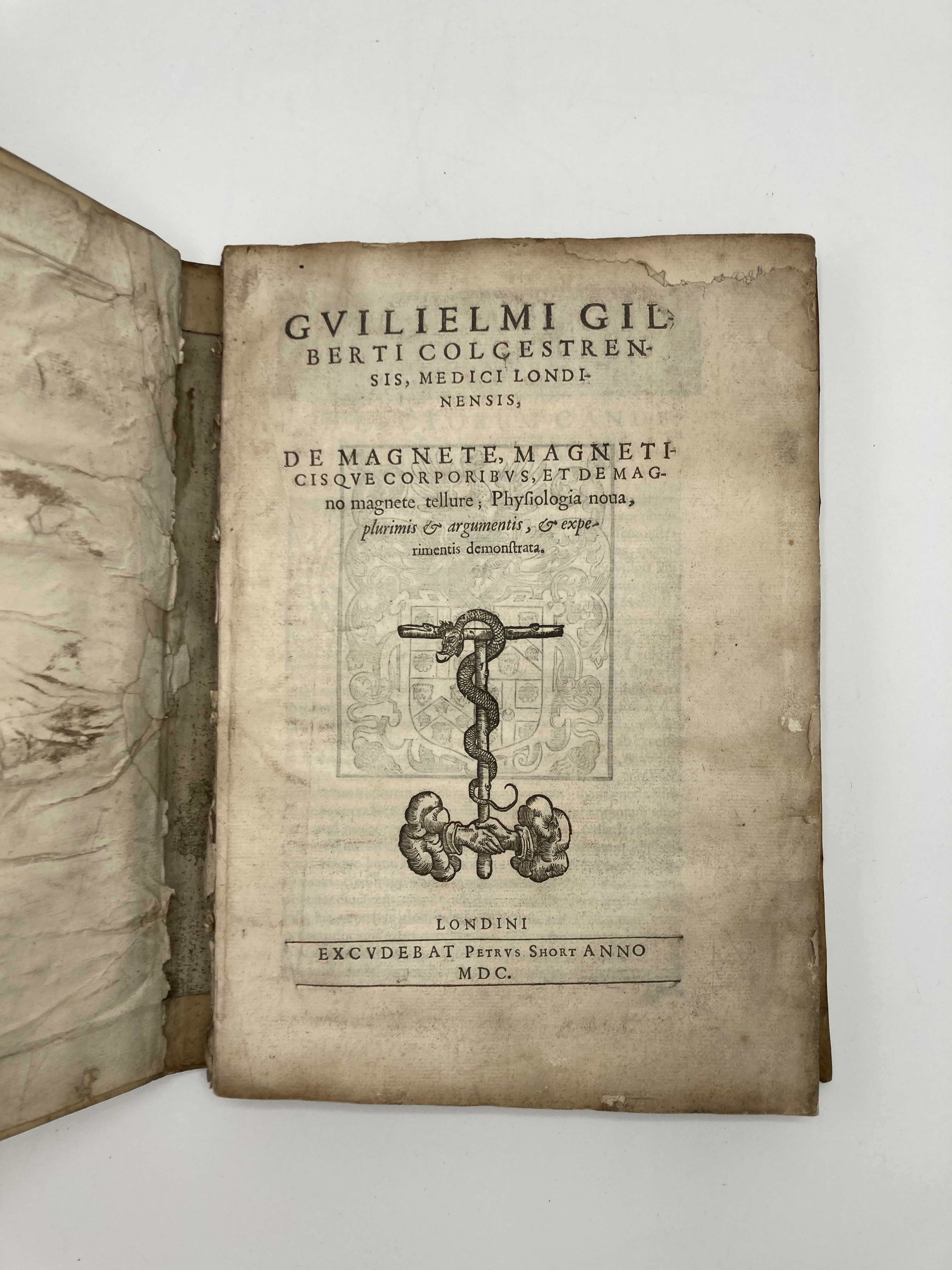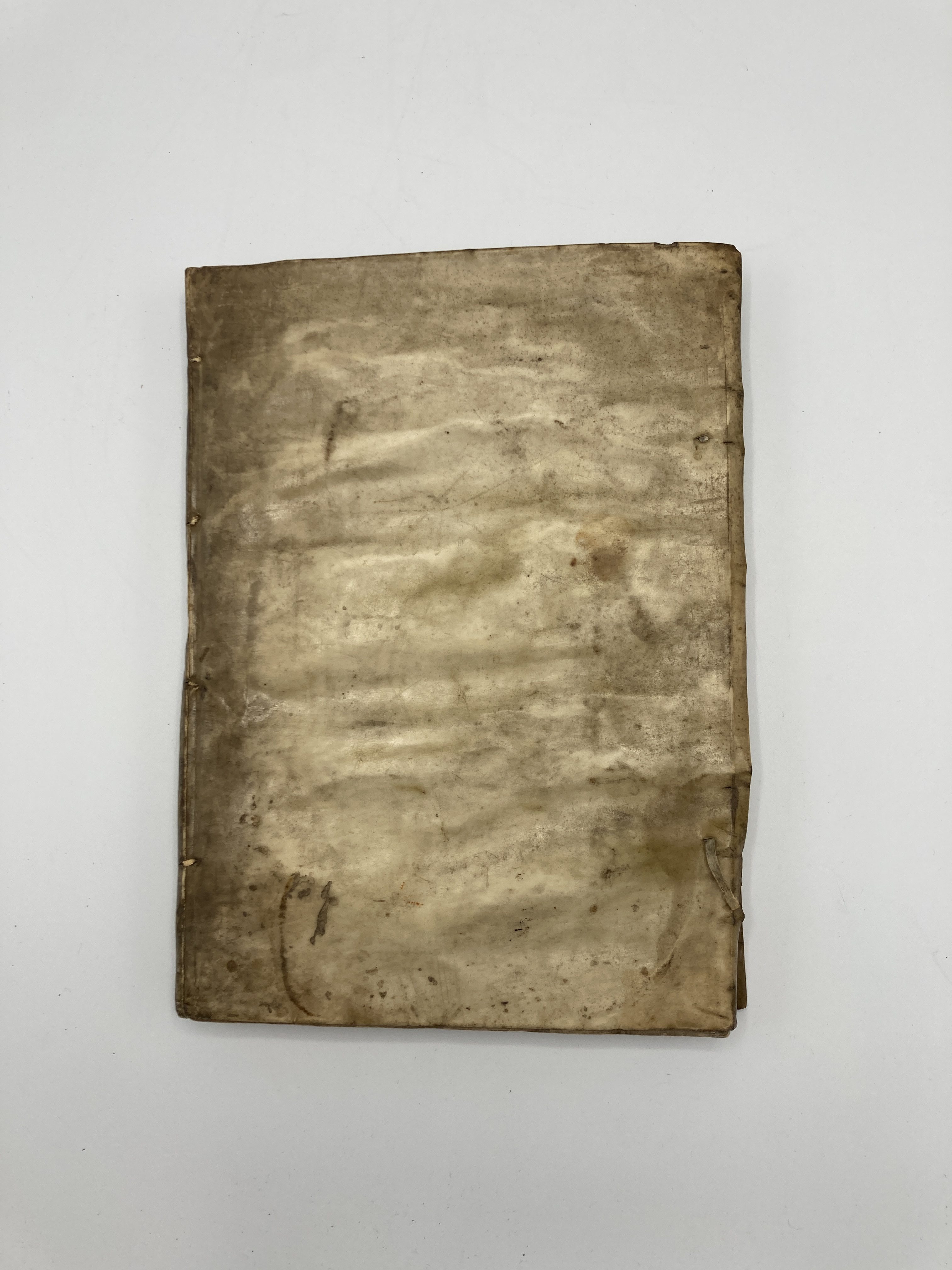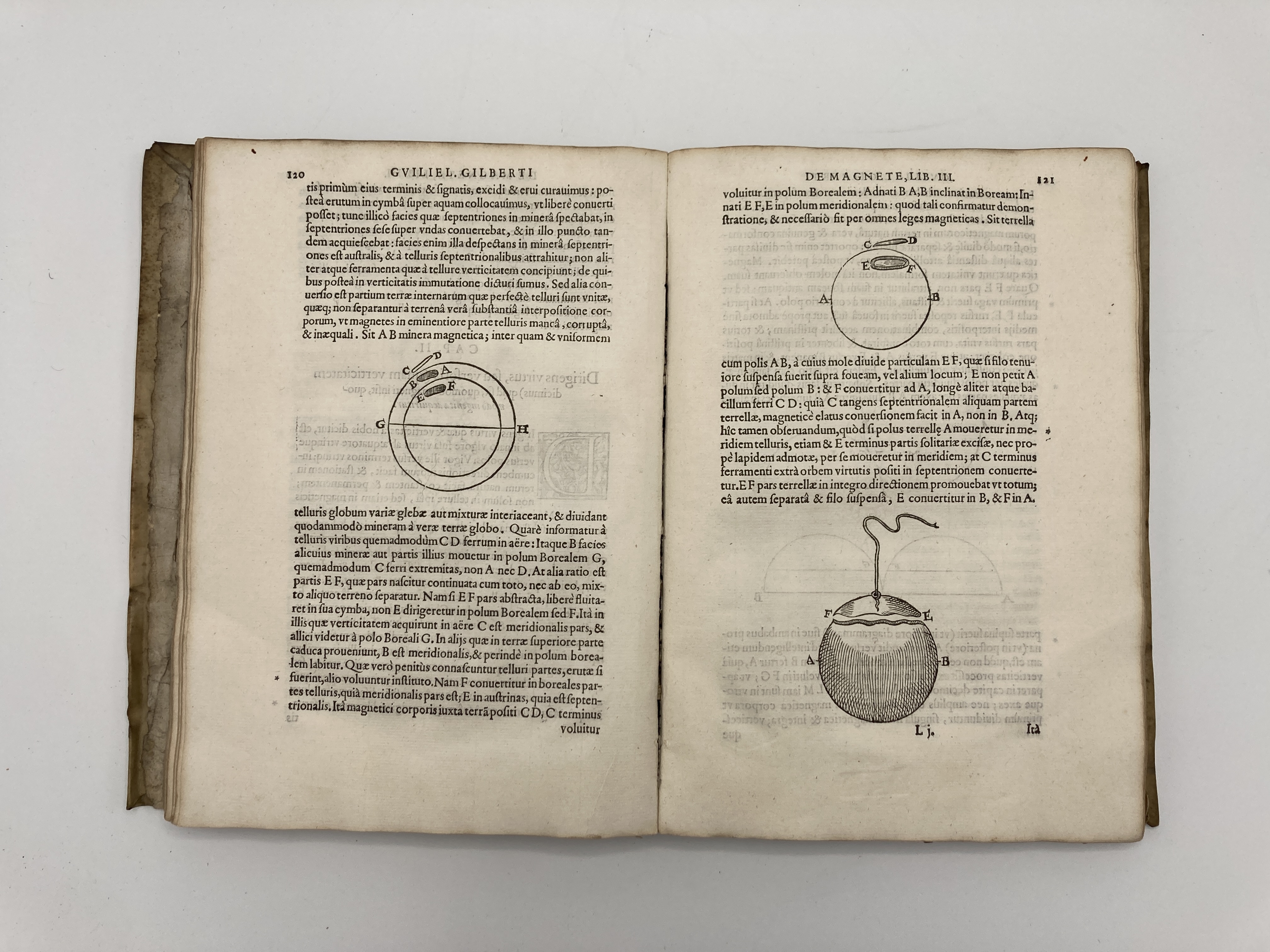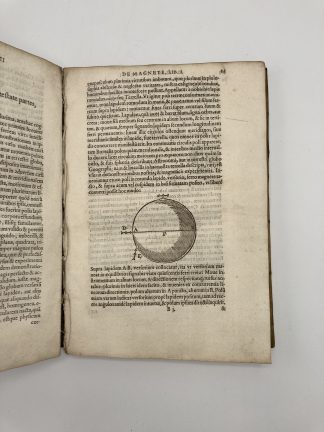GILBERT, William.
FIRST EXAMINATION OF ELECTRICITY IN PRINT
De magnete magneticisque corporibus.
London, P. Short, 1600.£39,500.00
FIRST EDITION. Small folio. pp. [16], 240 + 1 folding plate. Roman letter, little Italic. Printer’s device to title, Gilbert’s woodcut arms to verso, 90 full-page or smaller woodcut diagrams of magnets and experiments on magnetism, decorated initials and ornaments. Title and last verso dusty, small tear from upper blank margin of title, light age yellowing. An excellent, crisp, clean copy in contemporary English vellum, yapp edges, remains of one tie, early ms title to spine, a little soiled, traces of chewing to lower cover, ms ‘36/6 d T.C. 1713 Oxford’ to front pastedown. Preserved in folding box.
A crisp copy, in contemporary English binding, of the first edition of this ground-breaking, illustrated work on magnetism and electricity, by William Gilbert, ‘the Galileo of Magnetism’. ‘The first major English scientific treatise based on experimental methods of research. It is with Gilbert … that the modern development of electricity and magnetism really starts’ (PMM). Gilbert (1544-1603) was physician to Elizabeth I and James I, and a natural philosopher. His masterpiece, ‘De magnete’ was based on experiments he carried out using a model of the earth called ‘terrella’, often portrayed in the woodcut diagrams. His use of ‘electricus’ in the sense of ‘like amber’, here referring to its attractive properties, inspired Sir Thomas Browne to coin the term ‘electricity’ in 1646. The 6 parts are devoted to lodestones (naturally-magnetized minerals, like Gilbert’s own ‘terrella’), magnetic movements, direction, variation, declination and the revolution of the Earth intended as a gigantic magnet. The second chapter of Book II is ‘the earliest ever published on electricity’ (Mottelay, p.83); here Gilbert discusses his experiments on attraction using a rotating needle electroscope, and concludes by theorizing a differentiation between magnetic and electric bodies. The remainder of Book II deals, amongst others, with magnetic axis and poles, the spherical extension of magnetic force, and how it can be determined by mass or quantity. Book III discusses ‘verticity’ or the force visible when magnetized iron turns the opposite way, as well as the magnetization of stones, with a large woodcut showing a scientist or ironmonger creating a magnet in his workshop. Book IV examines variations of magnetism in different places due to the Earth’s rotation, as well as the construction of a mariner’s compass, also portrayed; Book V is a study of the magnetic needle; and Book VI employs the Copernican theory to explain the magnetic nature of the Earth. ‘The work contains a prodigious number and variety of experiments and observations […]. It would, indeed, be a miracle if all of Gilbert’s general inferences were just, or all his experiments accurate. It was untrodden ground. But, on the whole, this performance contains more real information than any writing of the age in which he lived, and is scarcely exceeded by any that has appeared since’ (Mottelay, p.89). A very fine copy of this most important scientific work.
‘Gilbert’s book influenced Kepler (112), Bacon (119), Boyle (141), Newton (161) and in particular Galileo (128), who used his theories to suggest his own proof of the findings of Copernicus in cosmology’ (PMM).
ESTC S121112; STC (2nd ed.), 11883; PMM 107; Luborsky & Ingram 11883; Mottelay, Electricity, p.82; Lowndes III 890; Horblitt ‘100 Famous Books in Science’ 41; Norman 905; SNL298.In stock


